Kraken Cryptocurrency Exchange

- Buy and trade 180+ cryptos.
- Instant funding & advanced trading options.
- Join 9M+ users around the world.
Each year, we conduct an extensive review of the best hardware wallets available in the US. To arrive at our picks, we review the best hardware wallets on the market for overall safety, functionality, cost and supported digital assets – including coins, tokens and NFTs.
You've probably noticed that brands like Ledger and Trezor dominate our list of the best hardware wallets. These companies created some of the first-ever cold storage wallets and each has a long track record of producing devices that have successfully protected customers' assets.
This isn't to say that other hardware wallets can't offer suitable security and cold storage functionality. Due diligence is especially important regarding crypto self-custody, so we've chosen only to showcase wallets that our team has first-hand experience with or that meet our strict criteria for inclusion.
Disclaimer: This page is not financial advice or an endorsement of digital assets, providers or services. Digital assets are volatile and risky, and past performance is no guarantee of future results. Potential regulations or policies can affect their availability and services provided. Talk with a financial professional before making a decision. Finder or the author may own cryptocurrency discussed on this page.
The Ledger Nano X is the top-tier USB-style hardware wallet from Ledger, a company that has produced industry-leading security for self-custody of digital assets since 2014.
It was our pick for the best overall hardware wallet because it allows you to securely store the keys to over 5,500 crypto assets and NFTs and put your assets to work through staking – all while on the go.
Unlike Ledger's cheaper Nano S Plus model, the Nano X has Bluetooth functionality and is compatible with both Android and iPhone for maximum portability.
Of the hardware wallets we compared, no other device provided this level of security alongside such a broad range of features. Mind you, while Ledger devices have not had any recorded security breaches, the software is closed-source. This means that it is not open to independent scrutiny, and you must place some degree of trust in the manufacturer. Read our full review for more information on the pros and cons of Ledger devices.
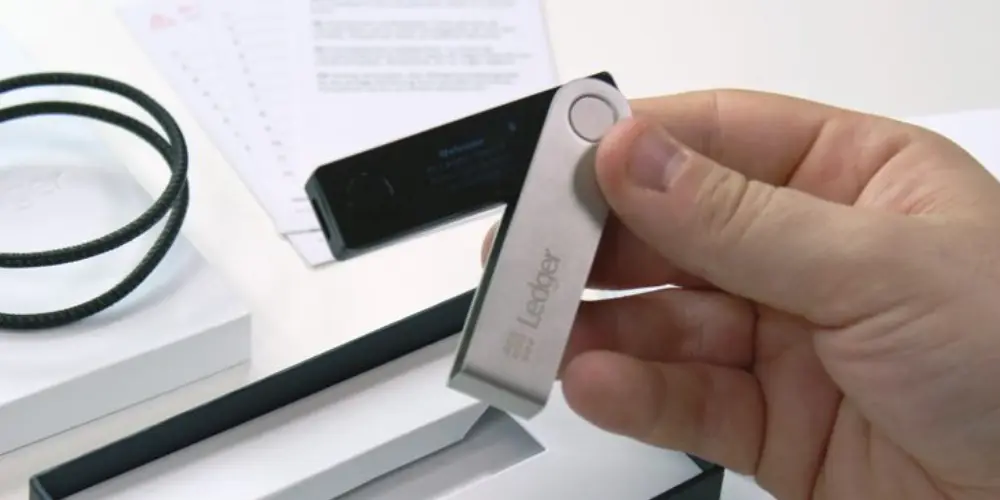
The Ledger Nano S Plus is our top contender for value because it offers the same high level of security and most of the same features as the Ledger Nano X – but at nearly half the price.
The Nano S Plus also supports cold storage for 5,500 crypto coins, tokens and NFTs, as well as staking and crypto exchange features through Ledger Live.
If you're content with safe offline storage of your private keys and don't need to use the device on the go with a mobile phone app – there's no Bluetooth functionality in the Nano S Plus – then this hardware wallet will likely tick a lot of boxes.
One potential issue with Ledger devices is that the software is closed-source, which means it is not open to independent scrutiny or review.
The Ledger Nano S Plus strikes such a good balance between security, coin support, features and relative affordability that we were hard pressed to find a better value option on the market.
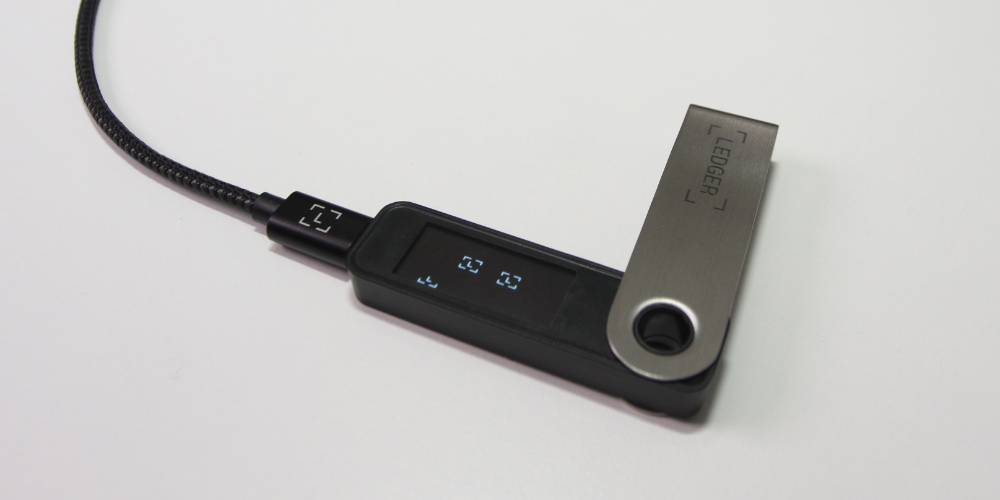
The brand new Ledger Stax was created by Tony Fadell – co-creator of the iPod and iPhone.
The device is just as secure as previous Ledger hardware wallets, but it's more stylish and was designed with everyday users in mind – not just tech geeks.
The stand-out feature of the Ledger Stax is its 3.7in (672x400px) electronic ink (e-ink) touchscreen, which makes managing your assets and clear-signing transactions via the device easy and convenient.
Other features that separate it from previous iterations of Ledger wallets include the fact that you can charge the device wirelessly and customize the lock screen with one of your NFTs.
The device is the size and shape of about 5 credit cards stacked on top of one another, whereas previous Ledger hardware wallets resembled a flash drive. One potential issue with Ledger devices is that the software is closed-source, which means it is not open to independent scrutiny or review.
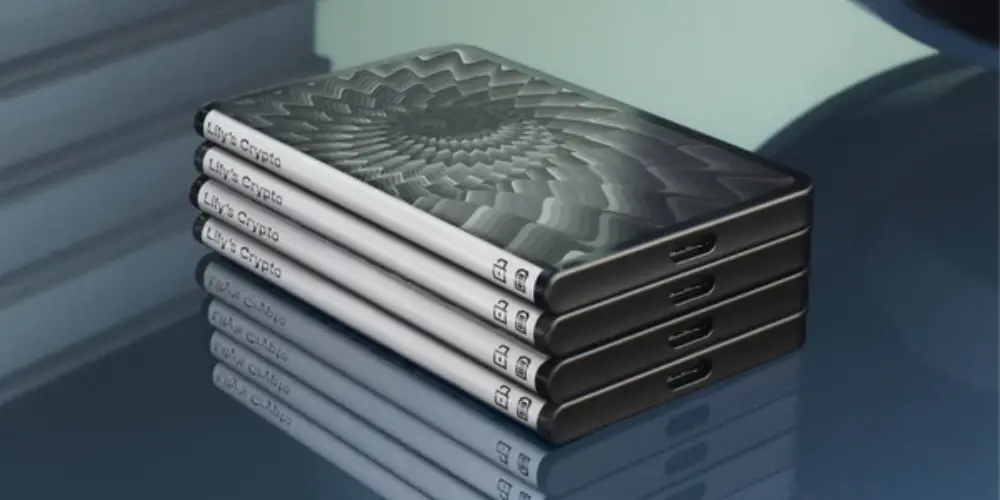
The Trezor Model T gets our pick for best wallet for experienced users because it offers a suite of advanced features that will really appeal to pros.
One of those features is the wallet's multisignature – or multisig – capabilities. Multisig provides an added layer of protection for Bitcoin, as multiple stakeholders must sign off on any transactions.
The Trezor Model T also supports Taproot – an upgrade to the privacy of the Bitcoin network. It also reduces transaction fees and allows users to engage with BTC smart contracts.
If anonymity is important to you, you can anonymize your transactions via the Tor network using the Trezor Suite interface.
You can also utilize the novel Shamir backup system with your Model T. The Shamir backup distributes your recovery phrase across multiple recovery shares, which can be stored in different locations for added security.
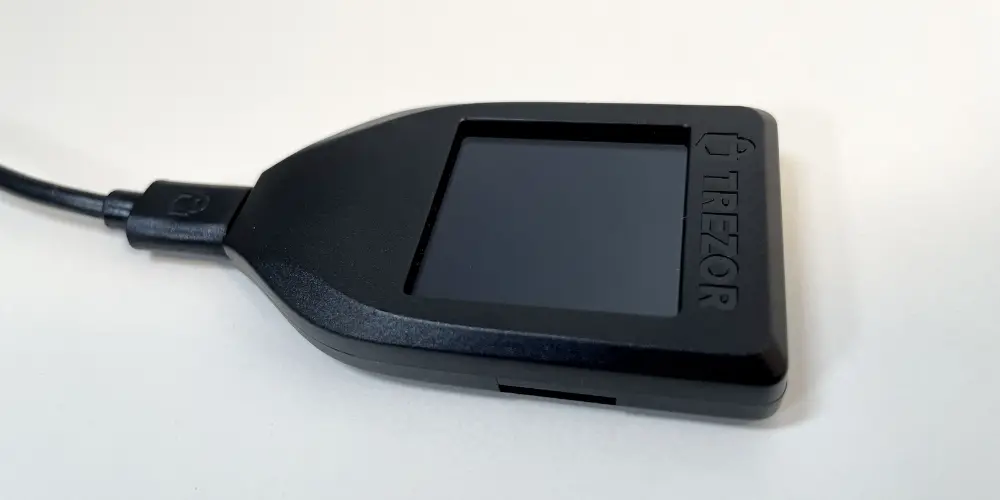
The SafePal S1 is a hardware wallet developed by Binance Labs.
Much like how Binance provides you with access to many crypto assets, the SafePal S1 allows you to store potentially unlimited cryptos on 54 different blockchains.
The device has the same internal security hardware – the Secure Element chip – that the more expensive Ledger hardware wallets have, but it's significantly more affordable.
That said, it's been reported that setting up the device has been difficult for some and that sending transactions on the device can be complicated.
So, while this device may be a good choice if you're on a budget, it might not be the best option for crypto newbies.
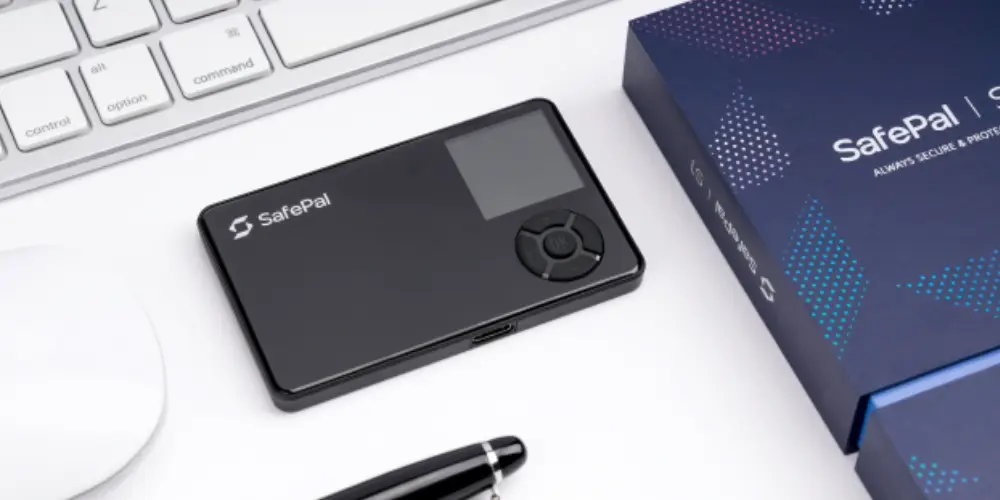
We chose Ledger's range as the best hardware wallets for staking because the Nano X, Nano S Plus and even the retired Nano S can be used to stake a wide variety of crypto assets.
You can use the native Ledger Live interface with any Ledger hardware wallet to stake 9 different cryptos – including Ether (ETH), Solana (SOL) and Cosmos (ATOM).
To stake an even greater assortment of digital assets, you can sync your Ledger hardware wallet with third-party apps like MetaMask or Yoroi and use these software wallets as a bridge to staking interfaces – all while safely storing the private keys to your assets offline.
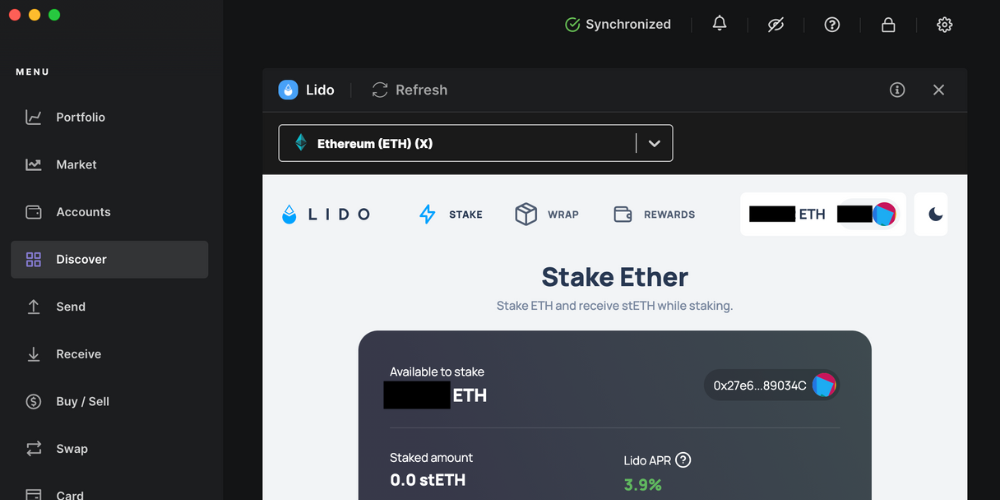
We wanted to give a shoutout to the Trezor Model One – the original hardware wallet – because Trezor has been pioneering the way for offline private key storage since 2012.
The Trezor Model One was released only months after the infamous Mt. Gox crypto exchange hack in February 2014.
Many investors had just learned the hard way that if you don't hold the private keys to your digital assets, they aren't technically yours. The Trezor Model One was a first-of-its-kind way to guarantee self-custody through this era, and it's kept a commendable track record ever since.
So, while the Trezor Model One might not have the highest functionality of all the hardware wallets on the market today, it remains a dependable option at an affordable price point.
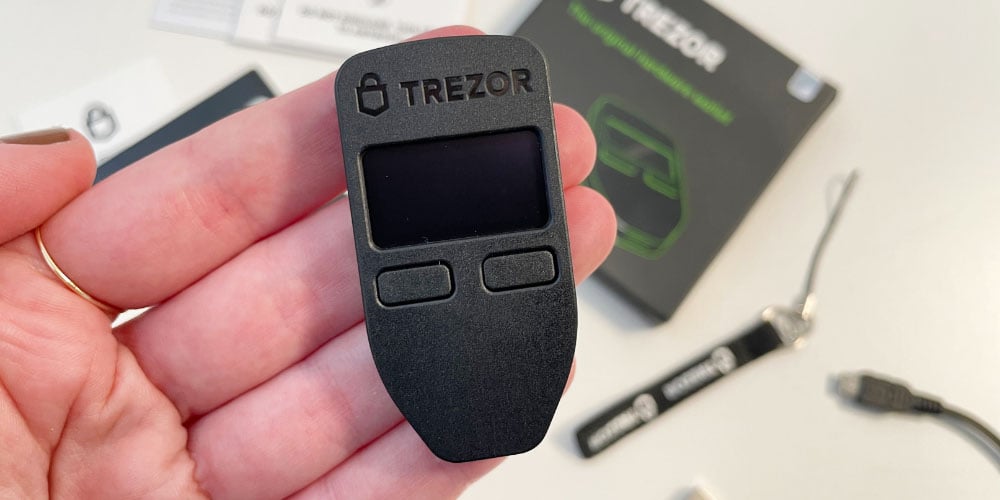
As a specialist Bitcoin hardware wallet, the COLDCARD Mk4 doesn't have as many of the features of Ledger or Trezor devices, but it does keep the private keys to your BTC stored securely offline.
The COLDCARD Mk4 was created by cypherpunks – technologists who advocate for privacy-enhancing cryptography – for Bitcoin maximalists.
Like Ledger hardware wallets, the COLDCARD Mk4 uses a Secure Element chip – the same type of chip found in passports and credit cards – to protect the private keys to your Bitcoin.
Using the Sparrow Wallet desktop software and a microSD card, you can send Bitcoin to and from your COLDCARD Mk4 without ever plugging the device in. The obvious downside to this is that you'll have to purchase a microSD card adapter for your computer if you plan to transfer data this way.
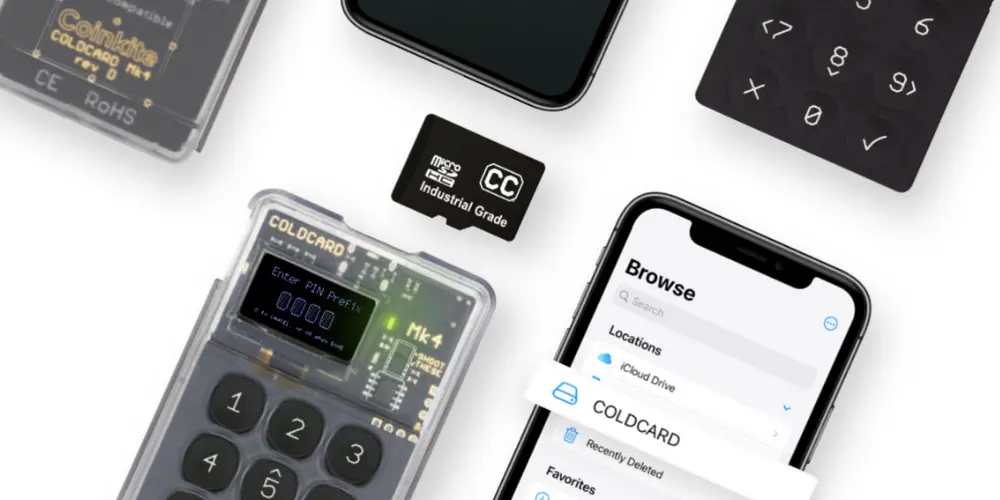
Blockstream is involved in many Bitcoin-related endeavors, from Bitcoin mining to the development of the Liquid Network – a layer-2 on Bitcoin for digital asset issuance.
Given its extensive experience with the Bitcoin network, it's no wonder that the Blockstream Jade is one of the most respected hardware wallets in the Bitcoin community.
Like the COLDCARD Mk4 – another beloved Bitcoin hardware wallet – the Blockstream Jade is a secure Bitcoin cold storage wallet designed with open-source code and multisig capabilities.
But the Blockstream Jade differs from the COLDCARD Mk4 in the following ways including:
The device also doesn't have a Secure Element chip — the primary security mechanism for the COLDCARD Mk4 and Ledger wallets.
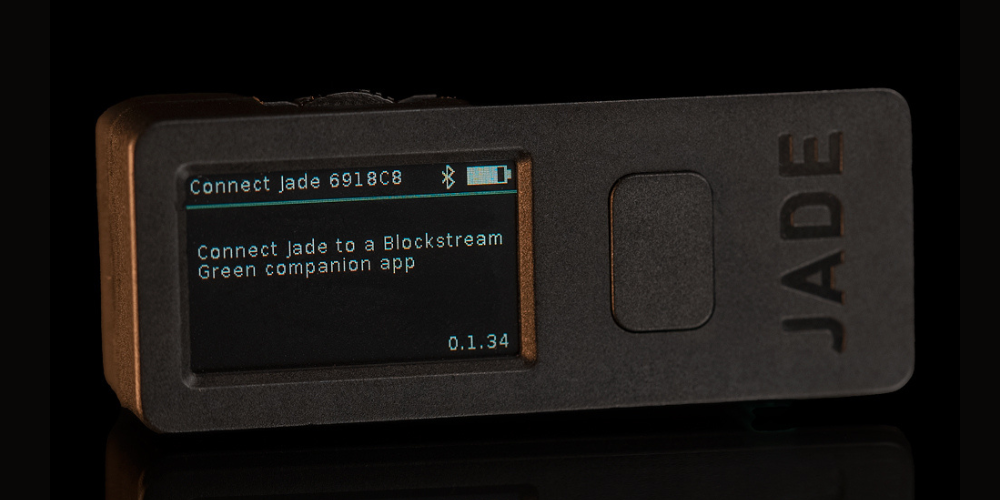
We chose to give Billfodl an honorable mention as the best recovery phrase backup device because it helps protect your chosen hardware wallet's recovery phrase from fire, flooding and any type of decay.
Most hardware wallets will prompt you to write down your recovery phrase on a sheet of paper when you set up your wallet. But if your recovery phrase sheet gets damaged or lost, you can lose access to your crypto – permanently.
Billfodl is a solid steel case that allows you to stamp your 24-word recovery phrase using metal tiles engraved with letters.
The tiles slide into three different rows on both sides of the device, and the device comes with a cover that swivels over your recovery phrase once you've properly arranged the tiles.
It's worth considering the added layer of security and peace of mind afforded by recovery phrase backup devices like Billfodl if you invest in a hardware wallet.
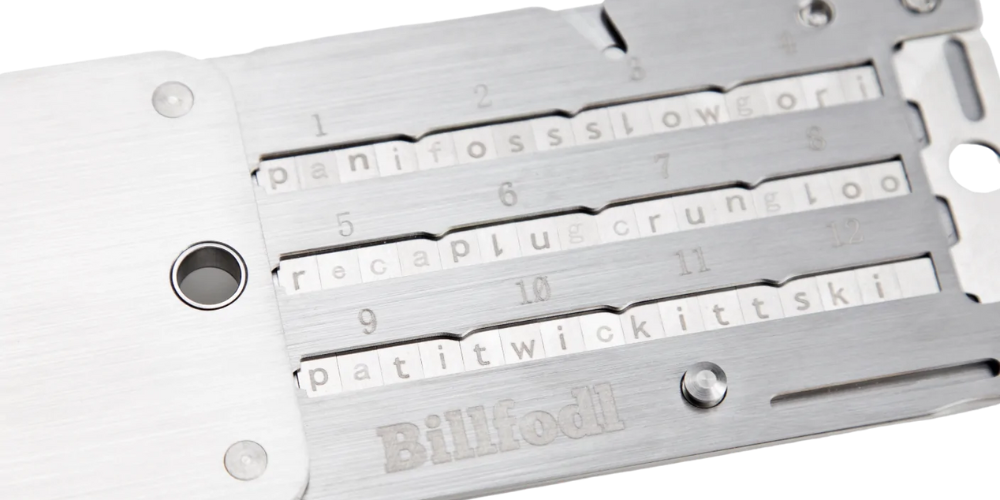
We currently don't have that product, but here are others to consider:
How we picked theseA hardware wallet is a physical vault designed to offer safe storage for your cryptocurrency private keys. These specially designed hard drives usually connect to your computer or smartphone via USB and, because you keep them offline, provide cold storage for your coins and tokens.
Hardware wallets contain a range of security features to protect your digital currency keys.
They're protected by a PIN and often include other security measures, such as a screen for viewing transaction details and buttons on the device for manually verifying transactions.
There are essentially two separate parts to a hardware wallet. The first part is a desktop, mobile or web client connected to the internet and performs nearly all the same functions as any ordinary hot wallet.
This software wallet creates the transactions but can't sign them – which is where the second part, the physical hardware wallet that contains your private keys, comes in. The transaction must be sent to your offline hardware wallet, verified by you and signed by the device before it can be completed.
A hot wallet is any wallet that has an active connection to, or is hosted, on the internet. Hot wallets are more common than cold wallets and are often more user-friendly. Thanks to their connection to the internet, moving funds in and out of these wallets is quick and easy.
Unfortunately, this ease of use also comes with disadvantages, such as making them susceptible to hackers, phishing scams and other vulnerabilities. Examples of hot wallets include those offered by exchanges or web wallets such as MetaMask.
A cold wallet refers to any wallet stored offline. Cold wallet storage can refer to numerous methods, such as creating a paper wallet with a QR code, storing a wallet on an air-gapped computer (disconnected from the internet) or using a hardware wallet.
While considered more secure than a hot wallet, cold wallets are often slow to use, require a physical object and can be damaged in ways hot wallets can't. Hardware wallets are a particular type of cold wallet, popular for their additional security and redundancy features.
Find out more about the different types of cryptocurrency walletGenerally speaking, crypto hardware wallets are considered the safest way to store the private keys to your digital assets for the following reasons:

"A hardware wallet is essential for anyone serious about cryptocurrency. They offer the highest level of security for your long-term investments and can be paired with a Web3 wallet for use with DeFi. I never use crypto without one. After security, the main difference is the number of blockchains supported, so make sure you choose one that suits your portfolio."
If you've decided that offline storage in a hardware wallet is the best option, the next step is actually choosing a wallet. There are several reputable options available, so make sure you consider the following factors when deciding which one is right for you:
By considering these important features, you'll have a much better idea of which hardware wallet is right for you.
Keep the following tips in mind to help ensure the security of your crypto coins and tokens:
Digital Alternative: Secure & Anonymous Non-Custodial Crypto Wallet
Take full control of your crypto with Best Wallet — a non-custodial, multi-chain wallet designed for fast transactions, with built-in swaps, robust security and seamless access across mobile and desktop.
You might balk at spending more money to protect your crypto investments, but as countless well-publicized stories of exchange theft and insolvency have demonstrated over the years, "not your keys, not your coins."
Keeping the private keys to your crypto assets in cold storage on a hardware wallet is widely recommended for anyone planning to make significant investments or to hold crypto for the long term.
As always, though, do your own research to find the crypto wallet that's right for you. Our guide to the best crypto wallets covers the different types of wallets and can help you decide which will best suit your needs.
To evaluate our 2025 picks for the best crypto hardware wallets, we compared 10+ cold storage wallets on a range of criteria, including the following:
Disclaimer: Cryptocurrencies are speculative, complex and involve significant risks – they are highly volatile and sensitive to secondary activity. Performance is unpredictable and past performance is no guarantee of future performance. Consider your own circumstances, and obtain your own advice, before relying on this information. You should also verify the nature of any product or service (including its legal status and relevant regulatory requirements) and consult the relevant Regulators' websites before making any decision. Finder, or the author, may have holdings in the cryptocurrencies discussed.
Best Wallet is a secure crypto wallet supporting 1,000+ assets with enhanced security. Find out how to deposit crypto and avoid fees today.
Learn about the capabilities, benefits and pitfalls of the NGRAVE ZERO hardware wallet.
We compared Trezor and Ledger hardware wallets to see which has the most to offer.
Learn how the Ledger Stax stands out compared to previous Ledger hardware wallets.
Our round-up of the best non-custodial crypto wallets and why they’re so important.
Zengo is an innovative mobile crypto wallet that allows users to retain custody while offering easy access.
All you need to know about MetaMask – the browser extension digital wallet and a user-friendly bridge to the world of Ethereum decentralised applications.
See how the Trezor Model T measures up as a crypto hardware wallet.
See how the Trezor One compares in the world of crypto hardware wallets.